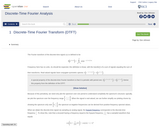
Definitions and basic algorithms for Fourier analysis for discrete-time signals.
- Subject:
- Mathematics
- Material Type:
- Activity/Lab
- Full Course
- Provider:
- Rice University
- Provider Set:
- Connexions
- Author:
- Don Johnson
- Date Added:
- 10/13/2017
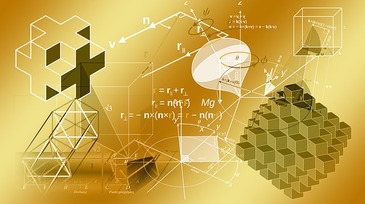

Definitions and basic algorithms for Fourier analysis for discrete-time signals.

This is an activity about modeling the apparent motion of the Sun as seen from Earth. Learners will use a flashlight, toothpick, and styrofoam model Sun to mimic the relative shadow motion produced by a sundial. The activity will help learners understand that because the Earth rotates from West to East, the Sun appears to rise in the East and set in the West. This is Activity 6 of the Sun As a Star afterschool curriculum.

" Double affine Hecke algebras (DAHA), also called Cherednik algebras, and their representations appear in many contexts: integrable systems (Calogero-Moser and Ruijsenaars models), algebraic geometry (Hilbert schemes), orthogonal polynomials, Lie theory, quantum groups, etc. In this course we will review the basic theory of DAHA and their representations, emphasizing their connections with other subjects and open problems."
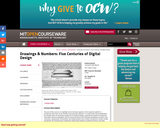
Seminar on a selected topic from Renaissance architecture. Requires original research and presentation of a report. The aim of this course is to highlight some technical aspects of the classical tradition in architecture that have so far received only sporadic attention. It is well known that quantification has always been an essential component of classical design: proportional systems in particular have been keenly investigated. But the actual technical tools whereby quantitative precision was conceived, represented, transmitted, and implemented in pre-modern architecture remain mostly unexplored. By showing that a dialectical relationship between architectural theory and data-processing technologies was as crucial in the past as it is today, this course hopes to promote a more historically aware understanding of the current computer-induced transformations in architectural design.
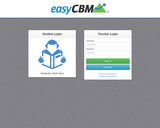
"The easyCBM system was developed by educational researchers at the University of Oregon in close collaboration with school district partners across the United States. It is designed to give teachers insight into which of their students may need additional instructional supports as well as to provide a means by which they can measure the effectiveness of their teaching. System reports provide information that supports evidence-based decision making, and the Interventions interface streamlines the process of keeping track of students' instructional program, a feature that is particularly helpful for student study team meetings and parent conferences.
The full District system includes a variety of curriculum based measures in the content areas of early literacy in both English and Spanish as well as oral reading fluency, vocabulary, and reading comprehension. In addition, it offers mathematics measures with reach to both the National Council of Teachers of Mathematics (NCTM) Focal Point Standards and the Common Core State Standards in Mathematics, with built-in read-aloud and Spanish translation accommodations. The Teacher Deluxe Edition offers the same features as the District version, but is optimized for individual teacher, rather than system-wide adoption. A truncated version, the Lite Edition, is available free of charge for individual teachers."

This is the world's largest site for arts integration and STEAM in K-12 education. Contains standards-aligned lesson plans, free printables, online courses, certification and conferences for professional development credit. They cover arts integration, advocacy, research, assessment, classroom management, curriculum, organization, PBL and the arts and classroom strategies.
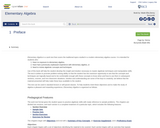
Elementary Algebra is a work text that covers the traditional topics studied in a modern elementary algebra course. It is intended for students who (1) have no exposure to elementary algebra, (2) have previously had an unpleasant experience with elementary algebra, or (3) need to review algebraic concepts and techniques.

This text respects the traditional approaches to algebra pedagogy while enhancing it with the technology available today. In addition, textual notation is introduced as a means to communicate solutions electronically throughout the text. While it is important to obtain the skills to solve problems correctly, it is just as important to communicate those solutions with others effectively in the modern era of instant communications.While algebra is one of the most diversely applied subjects, students often find it to be one of the more difficult hurdles in their education. With this in mind, John wrote Elementary Algebra from the ground up in an open and modular format, allowing the instructor to modify it and leverage their individual expertise as a means to maximize the student experience and success. Elementary Algebra takes the best of the traditional, practice-driven algebra texts and combines it with modern amenities to influence learning, like online/inline video solutions, as well as, other media driven features that only a free online text can deliver.

A learning activity for the Scoop on Soils book in the Elementary GLOBE Series. Each student will make predictions about the properties of various soil samples. Then they will examine several types of soils and record their observations. Next, they will learn about soil profiles and horizons by both examining a soil sample in a jar and by creating a soil profile flip chart. The purpose of the activity is to provide the opportunity for students to ask questions and make observations about soil and introduce students to the properties of soil and to the concept of soil profiles and horizons. After completing this activity, students will know about soil's different properties and about soil profiles. Students will know that soils have different properties including texture, color, and size. They will know that soil forms layers based on these properties.

Students will learn about magnification and how a magnifying lens works. They will examine a variety of different objects, first without a magnifier and then with a magnifier, and compare what they observe. They will practice observing details of these objects with magnifying lens. The purpose of this activity is for students to learn about observation skills and how tools can help people make observations, what "magnification" means, and to learn that scientists use tools, such as magnifying lenses, to examine objects. Students will be able to identify a magnifying glass and its purposes. They will be able to describe how the same object looks different when using the unaided eye versus a magnifying lens.
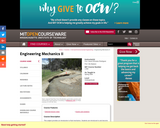
This subject provides an introduction to fluid mechanics. Students are introduced to and become familiar with all relevant physical properties and fundamental laws governing the behavior of fluids and learn how to solve a variety of problems of interest to civil and environmental engineers. While there is a chance to put skills from Calculus and Differential Equations to use in this subject, the emphasis is on physical understanding of why a fluid behaves the way it does. The aim is to make the students think as a fluid. In addition to relating a working knowledge of fluid mechanics, the subject prepares students for higher-level subjects in fluid dynamics.
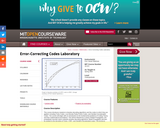
An introduction to the iterative decoding revolution. Learn about the experimental approach to error-correcting codes that has changed electronic communications. Topics include Turbo Codes, Low-Density Parity-Check Codes, and serially concatenated codes. Final projects involve the design of an error-correcting code, experiments to predict its performance, and the written and oral presentation of the results. Programming experience and a course in probability are required. Instruction and practice in oral and written communication provided. This course introduces students to iterative decoding algorithms and the codes to which they are applied, including Turbo Codes, Low-Density Parity-Check Codes, and Serially-Concatenated Codes. The course will begin with an introduction to the fundamental problems of Coding Theory and their mathematical formulations. This will be followed by a study of Belief Propagation--the probabilistic heuristic which underlies iterative decoding algorithms. Belief Propagation will then be applied to the decoding of Turbo, LDPC, and Serially-Concatenated codes. The technical portion of the course will conclude with a study of tools for explaining and predicting the behavior of iterative decoding algorithms, including EXIT charts and Density Evolution.
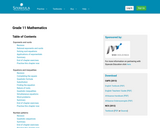
This is a comprehensive math textbook for Grade 11. It can be downloaded, read on-line on a mobile phone, computer or iPad. Every chapter has links to on-line video lessons and explanations. Summary presentations at the end of each chapter offer an overview of the content covered, with key points highlighted for easy revision. Topics covered are: language of mathematics, exponents, surds, error margins, quadratic sequences, finance, quadratic equations, quadratic inequalities, simultaneous equations, mathematical models, quadratic functions and graphs, hyperbolic functions and graphs, exponential functions and graphs, gradient at point, linear programming, geometry, trigonometry, statistics, independent variables, dependent events. This book is based upon the original Free High School Science Text series.
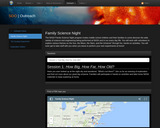
The 9-session NASA Family Science Night program invites middle school children and their families to discover the wide variety of science, technology, engineering, and mathematics being performed at NASA and in everyday life. Family Science Night programs explore various themes on the Sun, the Moon, the Stars, and the Universe through fun, hands-on activities, including at-home experiments. Information about Family Science Night implementation and support resources, including the facilitator's guide, are available by registering on the Family Science Night Facilitators website (see Related & Supplemental Resources for link).

This is an activity about cause and effect. Learners will investigate various online sources to find data and other pertinent information regarding reported effects on Earth for the solar events they identified in the previous activities in this curriculum set. Then, they will summarize their findings for this activity as part of the overall Space Weather project. This is Activity 13 of the Space Weather Forecast curriculum.

This is an activity about searching online data archives for solar wind events. Learners will find at least three episodes of increased solar wind activity impacting Earth using direct measurements of solar wind velocity and density. Then, they will characterize each events by its rise time, the time it takes for the solar wind speed to rise from normal levels to the peak speed of the event, and the percentage increase in solar wind velocity. This is Activity 11 of the Space Weather Forecast curriculum.
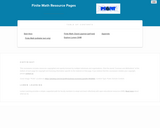
Mathematics
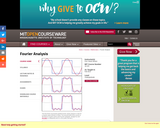
Continues 18.100. Roughly half the subject devoted to the theory of the Lebesgue integral with applications to probability, and half to Fourier series and Fourier integrals.
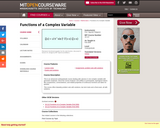
The basic properties of functions of one complex variable. Cauchy's theorem, holomorphic and meromorphic functions, residues, contour integrals, conformal mapping. Infinite series and products, the gamma function, the Mittag-Leffler theorem. Harmonic functions, Dirichlet's problem. This is an advanced undergraduate course dealing with calculus in one complex variable with geometric emphasis. Since the course Analysis I is a prerequisite, topological notions like compactness, connectedness, and related properties of continuous functions are taken for granted. This course offers biweekly problem sets with solutions, two term tests and a final exam, all with solutions.
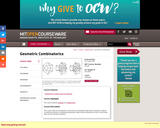
Introduction to discrete and computational geometry. Topics covered: planar graphs, geometric graphs, the theory of crossings, extremal graph theory, arrangements of curves and points in the plane (mainly pseudolines and pseudocircles), problems involving distances, Gallai-Sylvester-type problems, Davenport-Schinzel sequences. Emphasis on teaching methods in combinatorial geometry. Many results presented are recent, and include open problems.